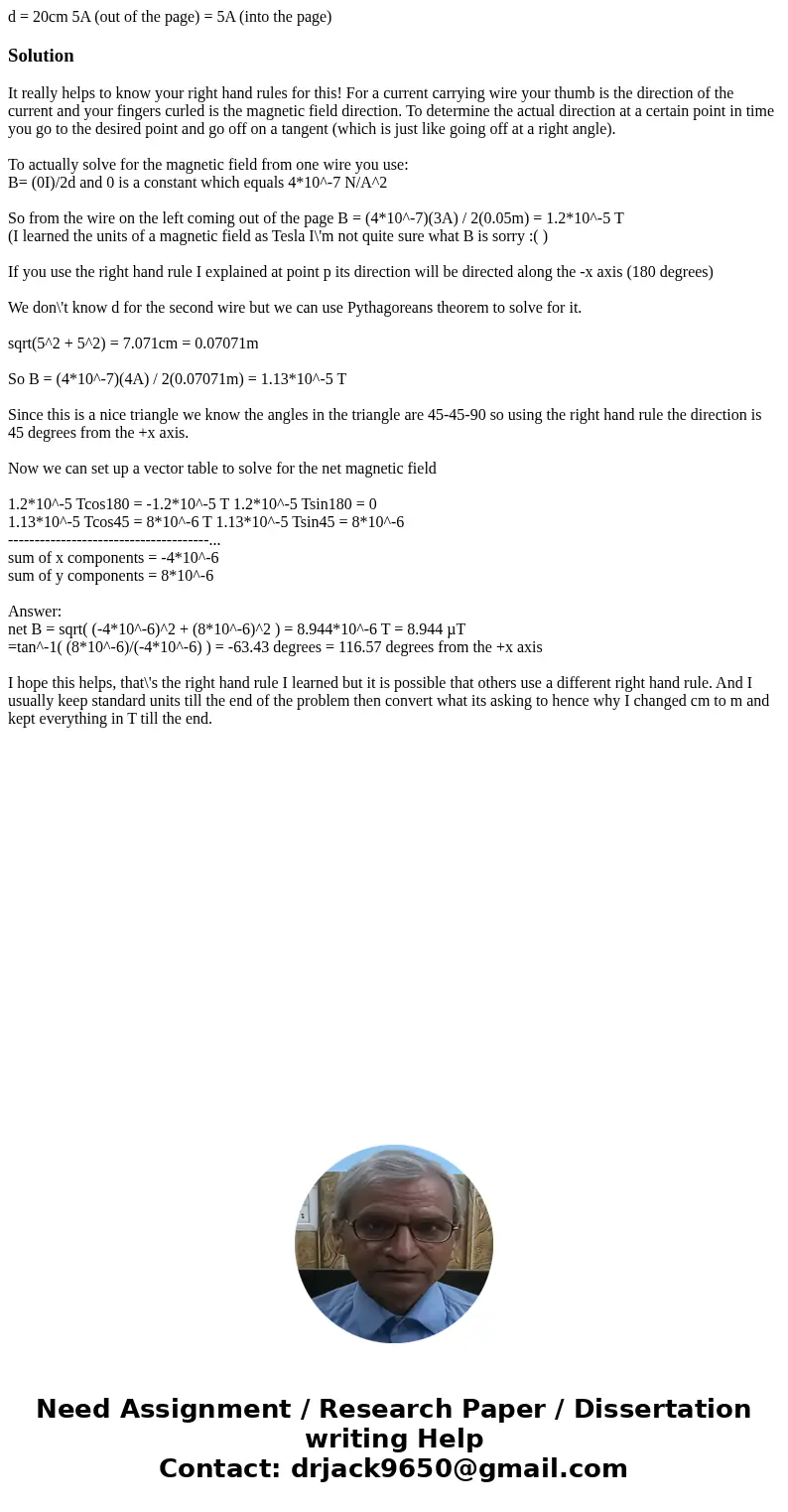d 20cm 5A out of the page 5A into the page SolutionIt real
Solution
It really helps to know your right hand rules for this! For a current carrying wire your thumb is the direction of the current and your fingers curled is the magnetic field direction. To determine the actual direction at a certain point in time you go to the desired point and go off on a tangent (which is just like going off at a right angle).
To actually solve for the magnetic field from one wire you use:
B= (0I)/2d and 0 is a constant which equals 4*10^-7 N/A^2
So from the wire on the left coming out of the page B = (4*10^-7)(3A) / 2(0.05m) = 1.2*10^-5 T
(I learned the units of a magnetic field as Tesla I\'m not quite sure what B is sorry :( )
If you use the right hand rule I explained at point p its direction will be directed along the -x axis (180 degrees)
We don\'t know d for the second wire but we can use Pythagoreans theorem to solve for it.
sqrt(5^2 + 5^2) = 7.071cm = 0.07071m
So B = (4*10^-7)(4A) / 2(0.07071m) = 1.13*10^-5 T
Since this is a nice triangle we know the angles in the triangle are 45-45-90 so using the right hand rule the direction is 45 degrees from the +x axis.
Now we can set up a vector table to solve for the net magnetic field
1.2*10^-5 Tcos180 = -1.2*10^-5 T 1.2*10^-5 Tsin180 = 0
1.13*10^-5 Tcos45 = 8*10^-6 T 1.13*10^-5 Tsin45 = 8*10^-6
--------------------------------------...
sum of x components = -4*10^-6
sum of y components = 8*10^-6
Answer:
net B = sqrt( (-4*10^-6)^2 + (8*10^-6)^2 ) = 8.944*10^-6 T = 8.944 µT
=tan^-1( (8*10^-6)/(-4*10^-6) ) = -63.43 degrees = 116.57 degrees from the +x axis
I hope this helps, that\'s the right hand rule I learned but it is possible that others use a different right hand rule. And I usually keep standard units till the end of the problem then convert what its asking to hence why I changed cm to m and kept everything in T till the end.

 Homework Sourse
Homework Sourse